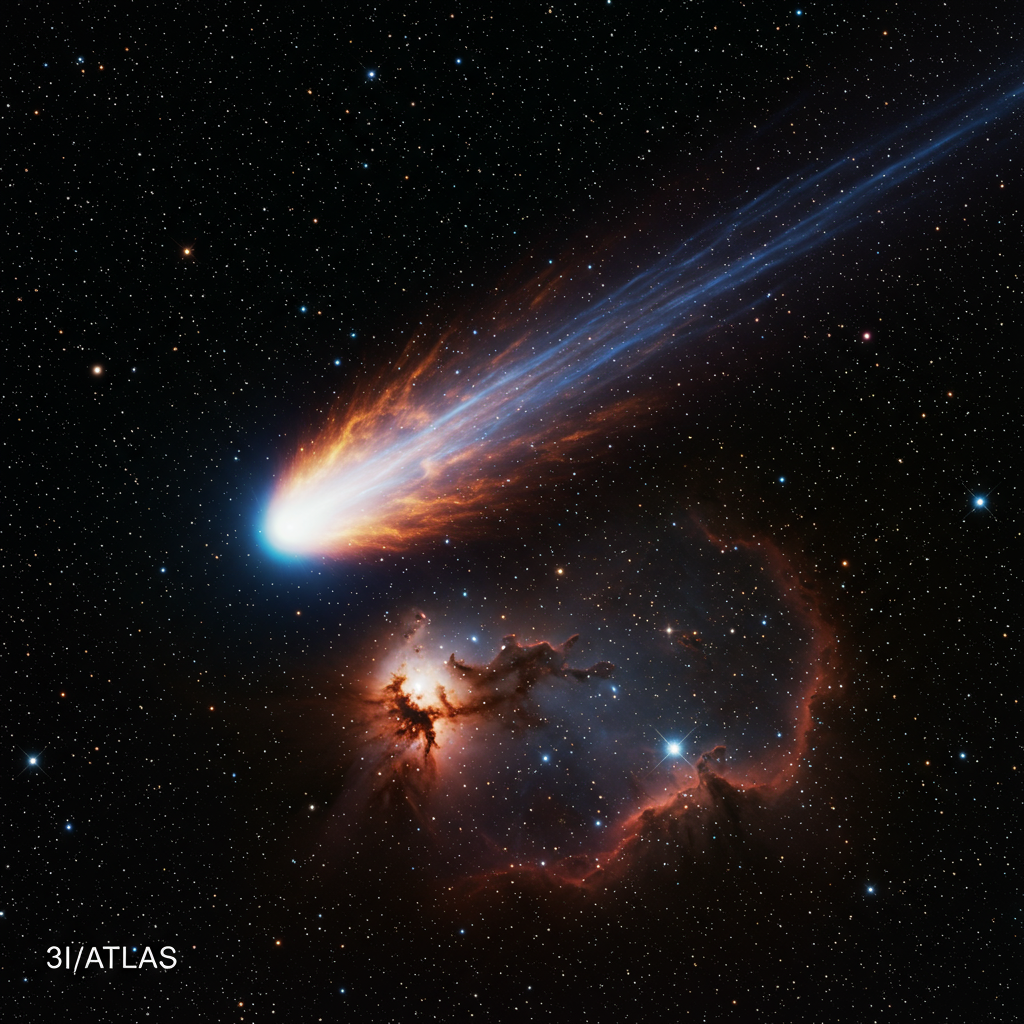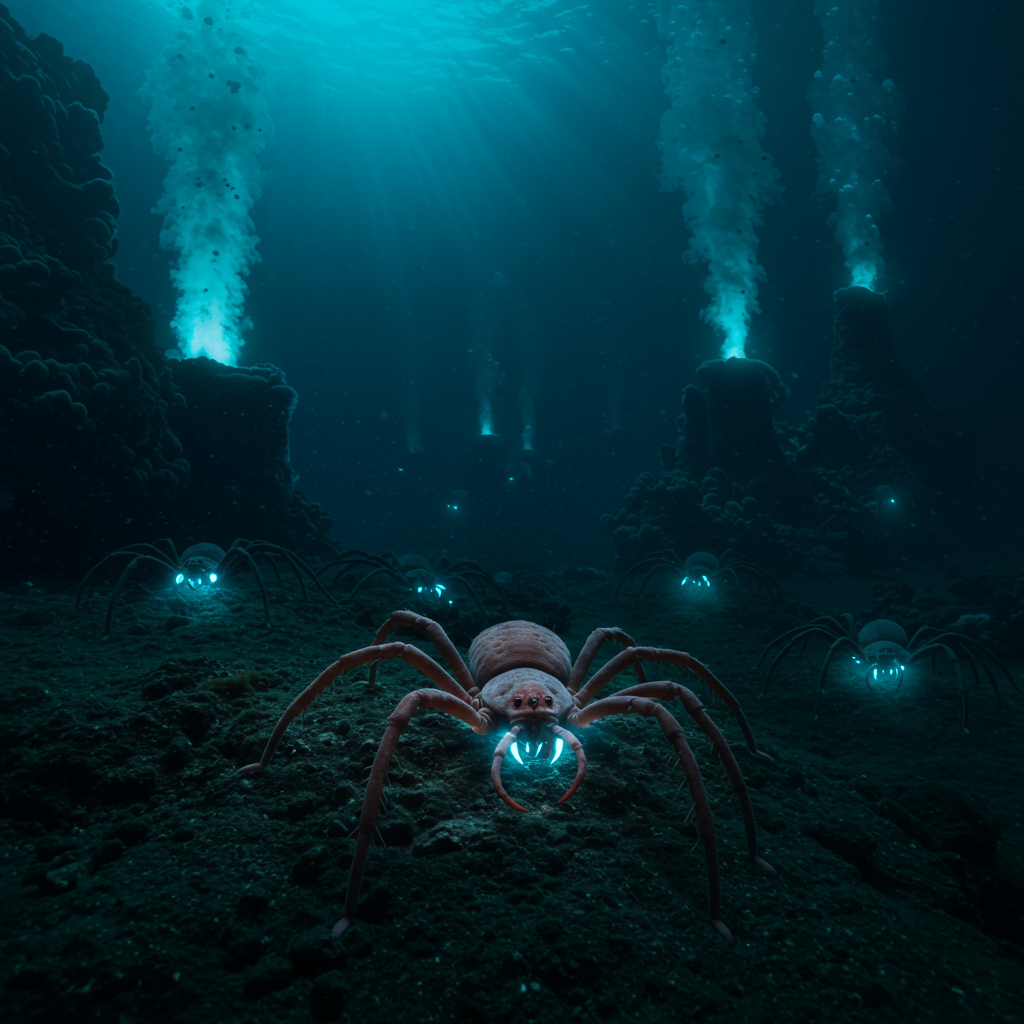The universe constantly surprises us, sending fleeting messengers from distant star systems right into our cosmic backyard. One such visitor, the enigmatic interstellar comet 3I/ATLAS, recently offered astronomers an unprecedented spectacle. Scientists have now captured stunning images revealing this “alien” comet actively growing a distinctive tail, a pivotal event that provides a rare window into the formation of other planetary systems. This groundbreaking observation not only marks a significant scientific milestone but also ignites a sense of wonder, reminding us of the vast and dynamic galaxy we inhabit.
A Glimpse of the Interstellar Traveler
On August 27, 2025, a dedicated team of scientists and students achieved a remarkable feat. Using the powerful Gemini South telescope, nestled on Cerro Pachón in Chile, they successfully imaged Comet 3I/ATLAS. This celestial photography session confirmed the comet’s growing tail, showcasing its increasing activity as it navigates our solar system. The images are more than just beautiful pictures; they offer critical data, hinting at the comet’s composition and behavior as it reacts to our Sun’s warmth.
The “Shadow the Scientists” initiative collaborated on these observations. This program connects researchers with the public. It makes authentic scientific experiments, like tracking an interstellar comet, accessible to a wider audience. This partnership underscores the dual nature of scientific discovery: rigorous investigation combined with shared human curiosity.
The Mystery of Interstellar Comets
Comet 3I/ATLAS is truly exceptional. Discovered on July 1 by the ATLAS (Asteroid Terrestrial-impact Last Alert System), it is only the third known object to journey into our solar system from beyond. Its predecessors, ‘Oumuamua (1I/2017 U1) in 2017 and 2I/Borisov in 2019, paved the way for understanding these cosmic nomads. Each interstellar intruder offers an unparalleled chance to study matter from another star system. This unique opportunity is also incredibly brief. Like its predecessors, 3I/ATLAS will eventually depart, disappearing back into the depths of interstellar space.
These visitors are like time capsules from alien worlds. They carry pristine material, untouched by our Sun’s radiation for most of their existence. Analyzing their composition gives astronomers direct clues about planet-forming processes around other stars. This makes every observation of 3I/ATLAS invaluable.
How a Comet’s Tail Forms
Comets, whether from our solar system or beyond, exhibit a fascinating behavior when they approach a star. Our Sun’s radiation warms the icy core of a comet like 3I/ATLAS. This heat causes the solid ice to transform directly into gas, skipping the liquid phase entirely. This process is known as sublimation. The escaping gas then erupts from the comet’s nucleus, creating a distinctive hazy envelope called a “coma” and its characteristic tail. As a comet moves closer to the Sun, it expels more material. This results in a longer, more pronounced tail. The new images from Gemini South clearly depict this phenomenon unfolding with 3I/ATLAS. Its wide coma and tail, stretching roughly 1/120th of a degree across the sky, are noticeably larger than in previous observations.
“We were excited to see the growth of the tail,” said Karen Meech, lead astronomer and University of Hawaii Institute for Astronomy researcher. “This suggests a change in the particles from the previous Gemini images.” This observation highlights the dynamic nature of these celestial bodies.
Unlocking Chemical Fingerprints from a Distant World
Beyond the visual spectacle, scientists are employing sophisticated techniques to analyze 3I/ATLAS. They study the wavelengths of light, or spectrum, that the comet emits. Different chemicals absorb and emit light at specific wavelengths. This creates unique “fingerprints” within the comet’s coma and tail. By analyzing this light, researchers can deduce the chemical composition of 3I/ATLAS.
“The primary objectives… were to look at the colors of the comet,” Meech explained. This provides clues about the dust particles’ composition and sizes. Taking spectra offers a direct measure of the comet’s chemistry. This detailed analysis is crucial for understanding its origins. The initial spectral data has revealed fascinating insights into the comet’s chemistry.
Implications for Planetary Formation Across the Galaxy
A truly profound discovery has emerged from these new observations. The chemical makeup of interstellar comet 3I/ATLAS appears surprisingly similar to comets originating within our own solar system. Why is this significant? Comets are considered primordial building blocks. They formed concurrently with planets and asteroids within their respective star systems. This striking similarity implies a fundamental conclusion: the processes that formed our solar system’s planets around 4.6 billion years ago might be common throughout the galaxy. This suggests that the ingredients and mechanisms for planet formation are universal, increasing the possibility of life-sustaining worlds elsewhere.
Bryce Bolin, a research scientist from Eureka Scientific, emphasized this point. “Every interstellar comet is a messenger from another star system,” he stated. “By studying their light and color, we can begin to understand the diversity of worlds beyond our own.” This direct comparison of cosmic building blocks provides unprecedented validation for current theories of planet formation. It offers tantalizing clues about the abundance of planetary systems beyond our Sun.
The Future of Interstellar Comet Research
The journey of 3I/ATLAS through our solar system is far from over. Scientists eagerly anticipate another chance to examine it in November 2025. This will occur when the comet re-emerges from behind the Sun. This provides a rare second opportunity for detailed observation. Future studies may involve further spectroscopic analysis and high-resolution imaging to refine our understanding of its composition and evolution. These ongoing observations are critical. They help us understand how these unique objects interact with our Sun’s environment. They also shed light on how they might differ from their solar system counterparts as they get closer to our star.
The continued study of 3I/ATLAS and future interstellar visitors promises to revolutionize our knowledge of exoplanetary systems. Each new image and spectrum collected adds another piece to the grand cosmic puzzle. It brings us closer to answering fundamental questions about our place in the universe. This unique comet, a fleeting visitor, leaves a lasting impact on our understanding of galactic diversity.
Frequently Asked Questions
What makes Comet 3I/ATLAS unique among celestial objects?
Comet 3I/ATLAS stands out because it’s only the third confirmed object known to originate from outside our solar system. Unlike comets born here, 3I/ATLAS traveled vast distances from another star system, offering scientists a rare, direct sample of material from a different stellar environment. Its recent tail growth, captured by the Gemini South telescope on August 27, 2025, provides an unprecedented chance to study the chemical composition and behavior of an “alien” comet as it interacts with our Sun.
Where was the tail of Comet 3I/ATLAS observed, and who conducted the study?
Astronomers observed the growing tail of Comet 3I/ATLAS using the Gemini South telescope. This powerful instrument is located on Cerro Pachón in Chile. A team of scientists and students, led by Karen Meech from the University of Hawaii Institute for Astronomy, performed the observations. The “Shadow the Scientists” initiative also contributed, connecting the public with this significant scientific endeavor. These images provide crucial data on the comet’s changing particle characteristics.
How do scientists study interstellar comets like 3I/ATLAS to understand other star systems?
Scientists analyze interstellar comets like 3I/ATLAS through spectroscopic analysis. This method examines the wavelengths of light emitted from the comet’s coma and tail. Different chemical elements and compounds leave unique “fingerprints” in this light. By interpreting these spectral signatures, researchers can determine the comet’s chemical composition. The finding that 3I/ATLAS’s composition is similar to solar system comets suggests universal processes for planetary formation, offering profound insights into the diversity of exoplanetary systems.




